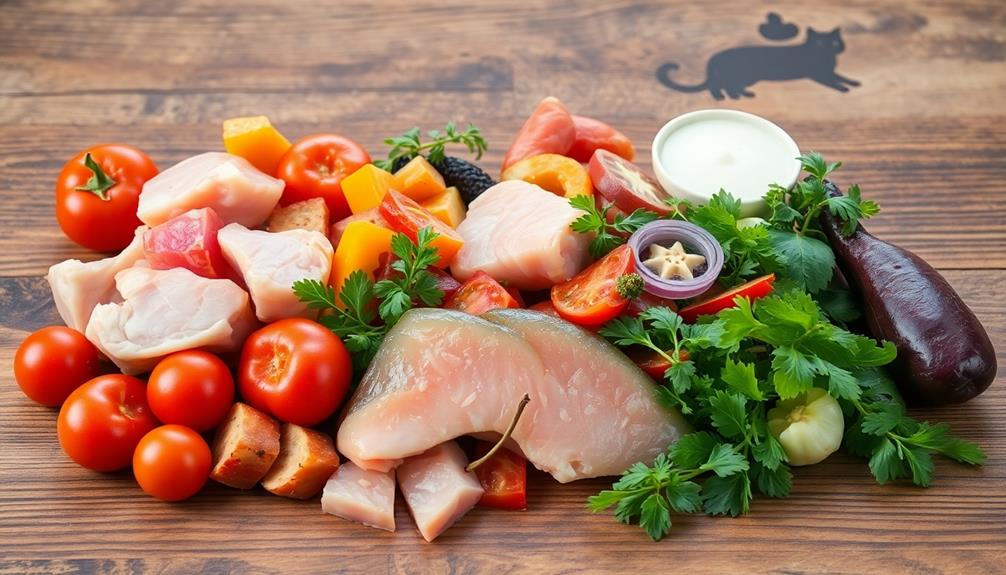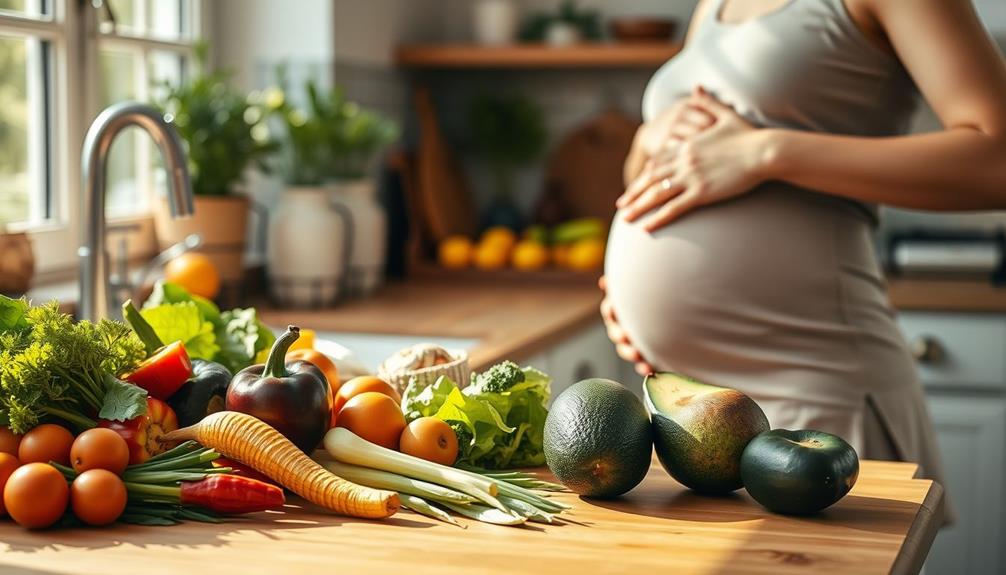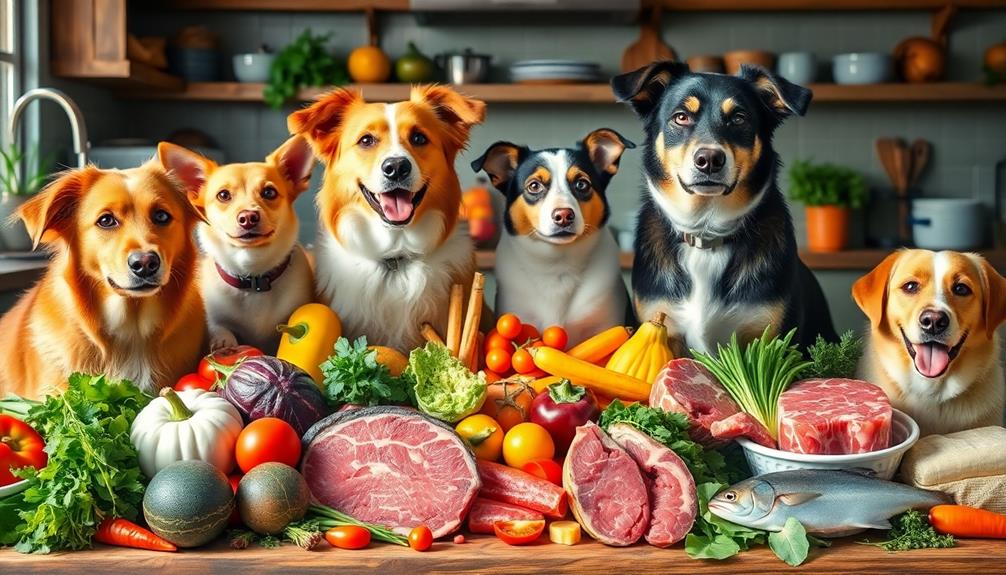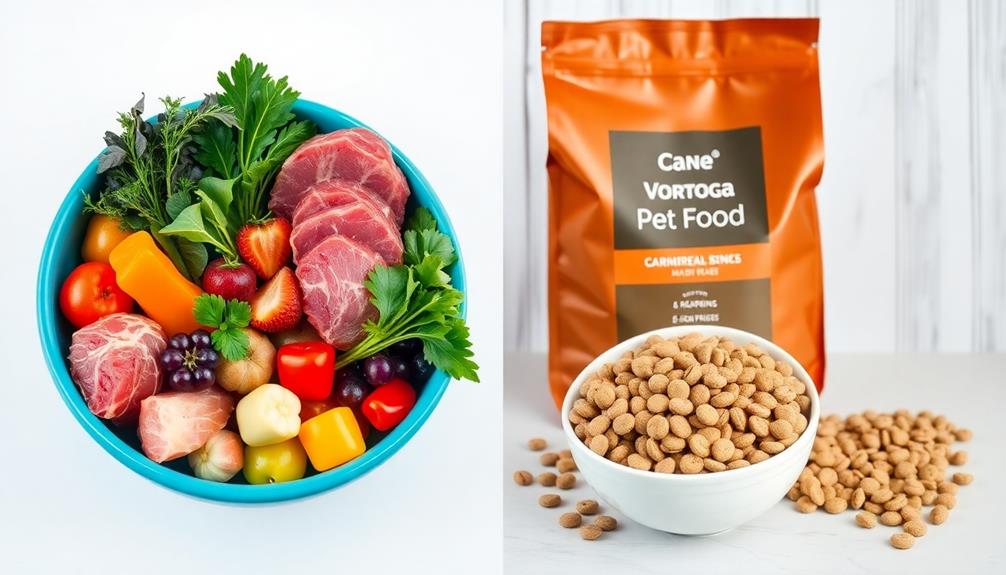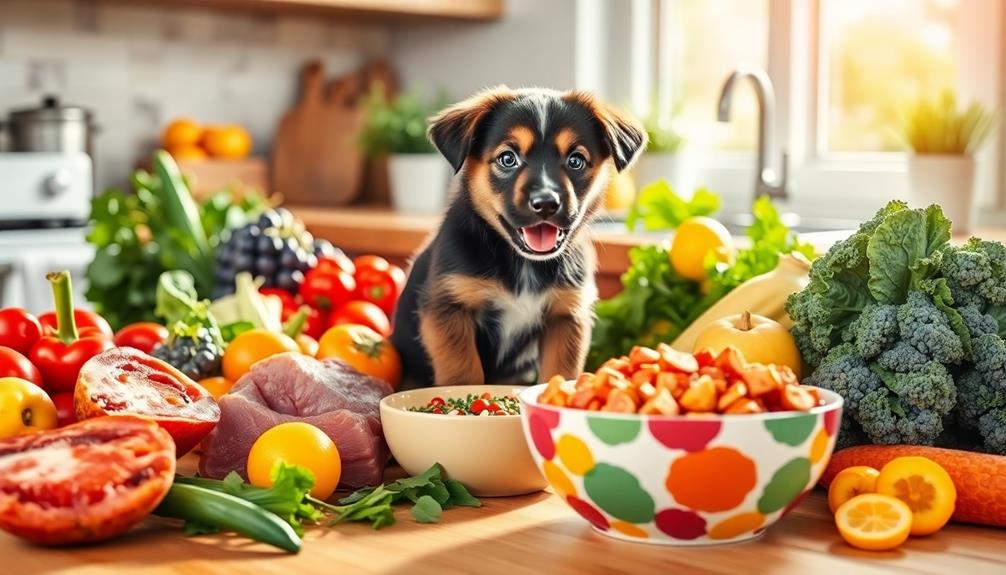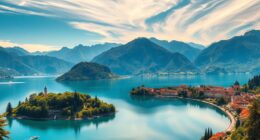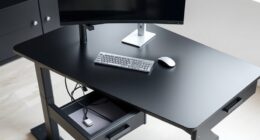Feeding your cat a raw food diet can greatly enhance its health by mimicking natural eating habits. Focus on raw muscle meat, organ meat, and ground bones, guaranteeing you include various protein sources like chicken and fish. It's essential to maintain balanced nutrition, aiming for 79-84% muscle meat with the right proportion of bones and organs. Shift gradually to minimize digestive upset, and always consult your vet to avoid potential risks. Remember to monitor for any health concerns as you switch diets. There's plenty more you can explore to guarantee your feline friend thrives on this nutritious path.
Key Takeaways
- Choose a balanced raw food diet that includes 79-84% muscle meat, 6% raw bone, and 10% organs to meet your cat's nutritional needs.
- Gradually transition your cat to a raw diet using methods like the two-bowl system to prevent digestive upset.
- Incorporate a variety of protein sources weekly, such as chicken, fish, and eggs, to ensure diverse nutrient intake.
- Consult with a veterinarian for tailored dietary advice and to avoid potential nutrient deficiencies or health risks.
- Practice food safety by handling raw meat carefully to minimize the risk of bacterial contamination.
Overview of Raw Food Diet
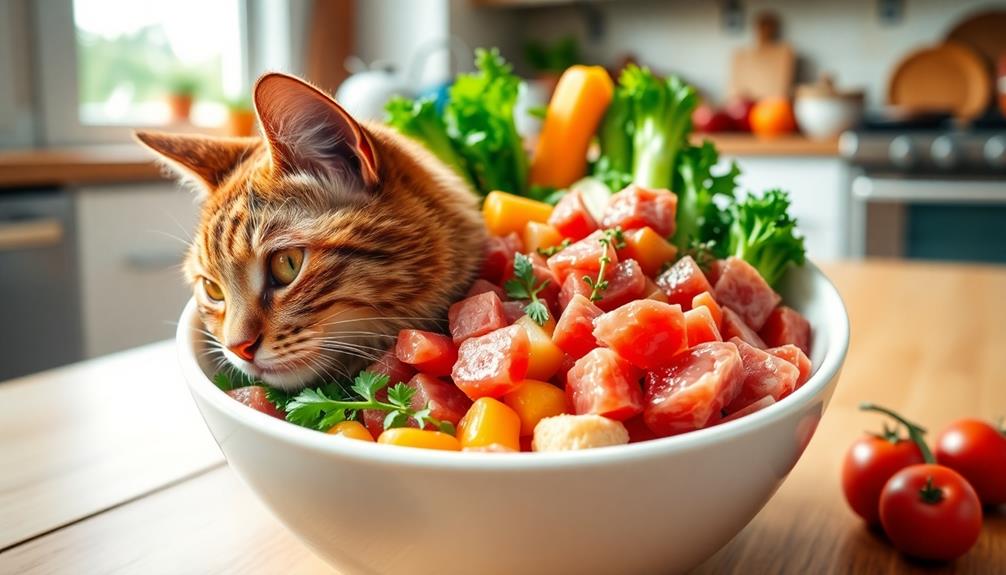
The raw food diet (RFD) for cats mimics the natural eating habits of wild felines, focusing on raw muscle meat, organ meat, and ground bones. This diet often includes protein sources like chicken, fish, and eggs, providing variety that can appeal to your cat's palate.
By offering raw muscle meat and organ meat, you aim to meet your cat's dietary needs while promoting better nutrient absorption. Additionally, incorporating feeding raw food to pets can help guarantee a balanced diet tailored to your cat's specific nutritional requirements.
However, it's essential to verify that the raw food diet you choose is labeled as complete and balanced. This assures it meets the nutritional requirements fundamental for feline health. Without this balance, your cat might face nutrient deficiencies, leading to health issues over time.
Safety concerns also play a significant role in raw feeding. Bacterial contamination is a real risk, so sourcing high-quality ingredients and practicing safe food preparation is critical.
You'll want to keep your cat's environment and food handling practices in check to mitigate these risks. Ultimately, if you're considering a raw food diet for your cat, weigh the benefits against safety concerns and nutritional adequacy to make an informed decision about their health.
Types of Raw Feeding Methods
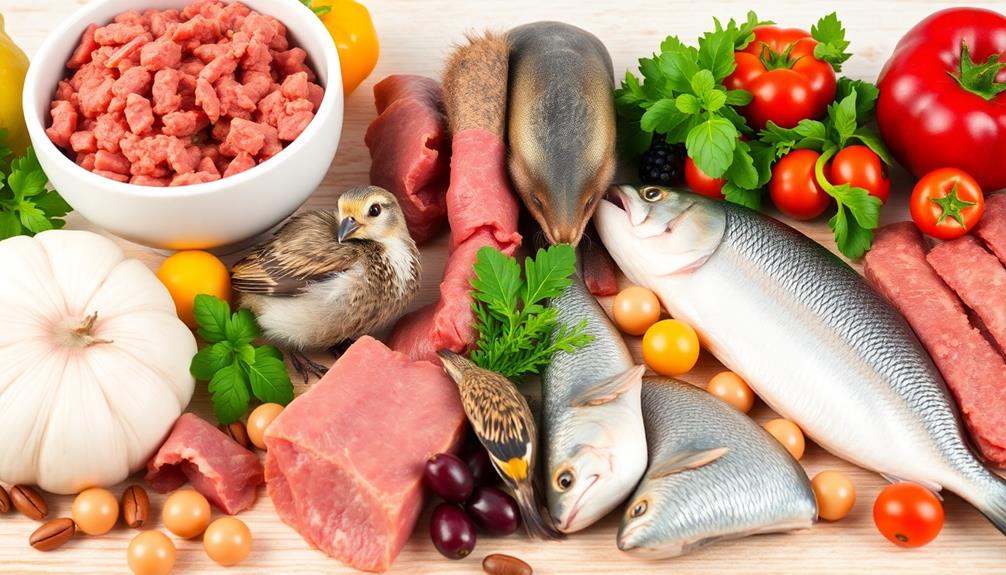
Choosing the right method of raw feeding can greatly influence your cat's health and satisfaction with their diet. There are several approaches you can consider:
| Feeding Method | Description |
|---|---|
| Prey Model Raw | Mimics a wild cat's diet using entire prey animals, guaranteeing complete nutrient profiles. |
| Franken Prey Feeding | Combines various protein sources, targeting 79-84% muscle meat, 6% raw edible bone, and 10% organs for balanced nutrition. |
| BARF Diet | Focuses on raw meat, bones, and some fruits/vegetables, but needs careful adjustment for your cat's specific nutrient requirements. |
| NRC Method | Offers a scientific approach with balanced guidelines based on extensive research for peak feline health. |
| Shifting Methods | Includes straight swap, one bowl, or two bowl approaches, allowing flexibility to match your cat's acceptance. |
Each method has its benefits and challenges, so it's essential to assess which diet for cats best suits your feline friend. Whichever path you choose, make sure that it meets their nutrient requirements and aligns with their preferences for a happy and healthy life.
Nutritional Requirements for Cats

Understanding your cat's nutritional requirements is fundamental for their overall health and well-being. As obligate carnivores, cats need a high protein intake, making up about 30-50% of their diet. A balanced raw diet should include muscle meat (79-84%), raw edible bone (6%), liver (5%), and other organs (5%). This combination guarantees your cat receives essential amino acids, like taurine, which are critical for peak health.
Additionally, cats need various vitamins and minerals to thrive. Calcium and phosphorus from raw bones support bone health, while fat-soluble vitamins from organ meats play significant roles in bodily functions.
Achieving nutritional adequacy in a raw diet can be challenging without careful planning, as homemade meals might lack essential nutrients found in commercially prepared options.
It's important to monitor your cat's health regularly, adjusting their diet based on their age, health status, and body weight. By doing so, you can help guarantee that your cat receives the nourishment they need to lead a happy, healthy life.
Adhering to these nutritional guidelines will set the foundation for a successful raw feeding journey.
Transitioning Your Cat to Raw Diet
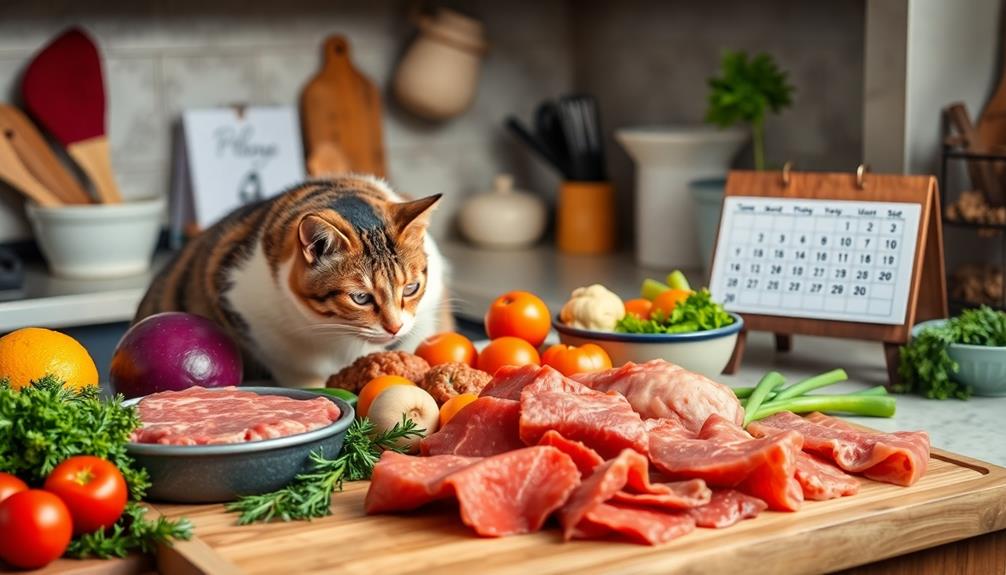
Shifting your cat to a raw diet can be a rewarding journey when done thoughtfully. To start, use a gradual approach, such as the two-bowl system, which allows you to mix their old food with the new raw diet. This eases the changeover and helps your cat adjust.
Make certain to serve the raw food at room temperature; this enhances palatability and encourages acceptance.
As you shift your cat, it's essential to monitor your cat for any digestive issues. Keep an eye on their stool and behavior, adjusting portion sizes as needed to avoid overfeeding or underfeeding. Aim to incorporate at least three different prey species each week to guarantee a varied nutrient intake, which is critical for your cat's overall health.
Throughout this process, don't hesitate to consult with a veterinarian. They can help address any health concerns and confirm that the new raw diet meets your cat's nutritional needs.
With patience and care, shifting your cat to a raw diet can lead to improved health and vitality, making it a beneficial change for both of you.
Safety and Health Considerations
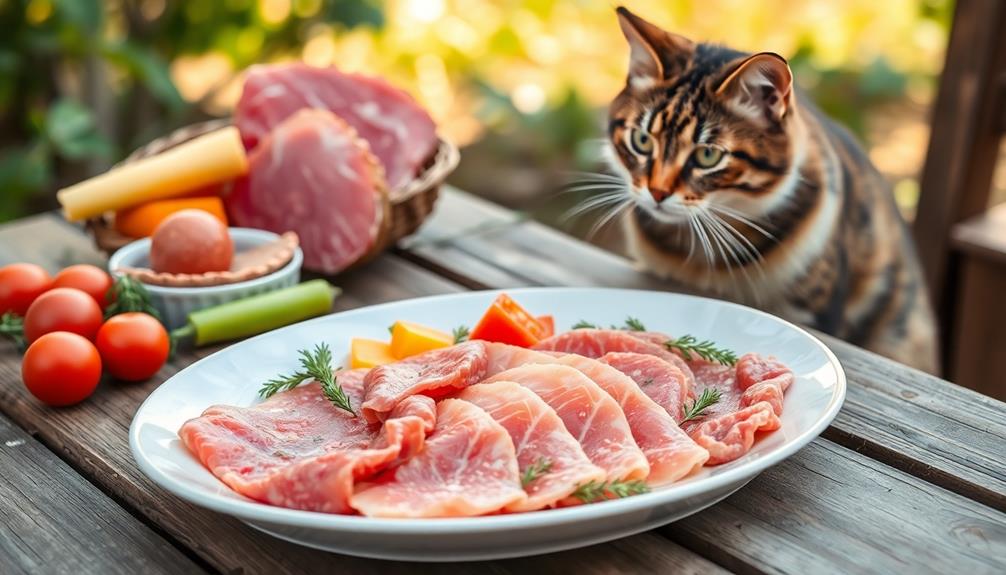
When considering a raw food diet for your cat, it's important to be aware of the potential safety and health risks involved. Raw pet food can harbor harmful bacteria like Salmonella and E. coli, which pose serious health risks to both your cat and your family. These pathogens can lead to severe gastrointestinal illness, so implementing strict safety measures is critical.
Additionally, if the raw diet isn't formulated correctly, your cat may experience nutrient deficiencies, such as thiamine deficiency, which can result in serious health issues. Consulting with a veterinarian is essential to guarantee nutritional sufficiency and that the diet meets your cat's specific needs.
Be cautious with unprocessed bones in raw diets, as they can cause intestinal blockages or lacerations, leading to significant health complications. It's important to weigh these risks carefully against the benefits of a raw diet.
Organizations like the CDC, FDA, and AVMA recommend thorough research and veterinary consultation before adopting a raw food diet for your feline friend. Always prioritize your cat's health and safety by being informed and prepared.
Frequently Asked Questions
How Much Raw Food Should I Feed My Cat Chart?
To determine how much raw food to feed your cat, consider its weight, age, and activity level. Generally, aim for 2-4% of its body weight daily, adjusting as necessary for health and activity.
Do Vets Recommend a Raw Diet for Cats?
Most vets don't recommend a raw diet for cats due to health risks like bacterial contamination and nutrient deficiencies. If you're considering it, consult your veterinarian to guarantee it meets your cat's specific needs.
Do Cats Need Supplements on Raw Diet?
Yes, cats often need supplements on a raw diet. You should consider adding calcium, taurine, and omega-3s, plus possibly B vitamins. Regularly check with your vet to tailor the supplements to your cat's needs.
What Should I Add to My Cat's Raw Food?
To enhance your cat's raw food, add a variety of proteins like chicken and fish, along with organ meats for essential nutrients. Including raw bones promotes dental health and animal-based fiber aids digestion. Monitor their response closely.
Conclusion
Incorporating a raw food diet for your cat can be a game-changer, transforming mealtime into a nutritious adventure. By understanding the various feeding methods and ensuring your feline's nutritional needs are met, you're setting the stage for a healthier, happier companion. Just remember to ease into the shift and keep safety in mind. With a little care and attention, you'll be gifting your furry friend a culinary experience that echoes their ancestral roots.

